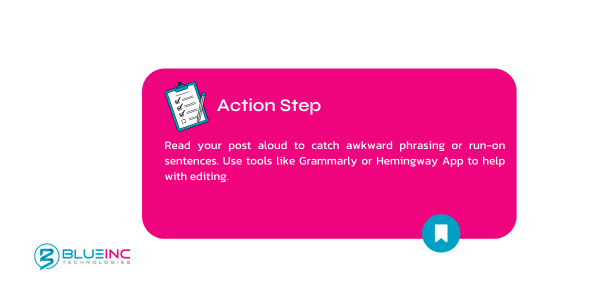
Writing a blog post that ranks high on search engines isn’t just about stringing words together—it’s about crafting a piece that serves your audience while pleasing the search engine gods. Imagine you’re building a house; you wouldn’t start with the roof, right? The same goes for writing a blog post that ranks.
Let’s walk through this step-by-step guide to ensure your blog posts not only rank but also resonate with your desired audience.
1. Start with Keyword Research: Lay the Foundation
Just like choosing the right plot for your dream house, keyword research is the foundation of your blog post. Start by identifying the main topic you want to write about. Use tools like Google Keyword Planner, Ahrefs, or SEMrush to find keywords that are relevant to your topic and have a good balance of search volume and competition.

2. Craft a Captivating Title: The First Impression Matters
Your title is the front door to your blog post. It needs to be inviting enough to make people want to come in. A good title is clear, concise, and includes your primary keyword.

Example: Instead of “Blog Writing Tips,” go for “How to Write a Blogpost that Ranks: A Step-by-Step Guide.”
3. Outline Your Content: Plan Your Structure
Think of the outline as your blueprint. An effective outline helps you organize your thoughts and ensures you cover all the points your audience needs. Break down your content into sections: Introduction, Main Points, and Conclusion.

Here’a an example outline you can use to draft your next blog post
| Section | Details |
| Introduction | Explain why ranking is important |
| Section 1 | Keyword Research |
| Section 2 | Crafting Headlines |
| Section 3 | Content Creation |
| Conclusion | Recap and call to action |
4. Write Engaging Content: Build the Walls
Now, it’s time to start writing. Begin with a strong introduction that hooks the reader. Your content should be conversational—imagine you’re explaining a concept to a friend over coffee. Use short paragraphs, bullet points, and headers to make your content easy to skim.

Analogy: Think of each paragraph as a brick; they all need to fit together to create a sturdy structure.
5. Optimize for SEO: Install the Fixtures
SEO optimization is like installing fixtures in your home—they make it functional and attractive. Use your primary keyword in the title, headers, and a few times throughout the content. Don’t overdo it—keyword stuffing can hurt your rankings.

Example: If your primary keyword is “write a blogpost,” variations might include “writing blog posts,” “blog writing tips,” or “how to write a blog.”
6. Incorporate Visuals: Add the Decor
Visuals like images, infographics, and videos are the decor of your blog post—they make it more appealing and easier to digest. Visuals can also improve your SEO if you use alt text properly.

Example: If you’re discussing keyword research tools, include a screenshot of Google Keyword Planner.
7. Edit and Proofread: Do a Final Walkthrough
Before hitting publish, take a step back and review your work. Check for grammar and spelling errors, ensure your points flow logically, and verify that you haven’t missed any crucial information.

Tip: Having someone else review your post can provide a fresh perspective and catch errors you might have overlooked.
8. Publish and Promote: Invite People In
Publishing is just the beginning. Share your blog post on social media, in newsletters, and through any other channels available to you. Encourage readers to share your content and engage with it through comments.

Example: If you’re targeting small business owners, share your post in LinkedIn groups or on business-related forums.
9. Monitor Performance: Inspect and Improve
Finally, once your blog post is live, monitor its performance. Use Google Analytics and other tools to see how it’s doing. Are people spending time on the page? Are they bouncing off quickly? Use this data to improve future posts.

Tip: A/B testing different headlines or images can also provide insights into what works best for your audience.
Want to learn how to build a website that ranks? Read here >>> SEO Website Design: How to Build a Website that Ranks
Conclusion
Writing a blog post that ranks is like building a well-designed house—it takes planning, execution, and a little creativity. Follow these steps to ensure your blog post isn’t just another piece of content but a valuable resource that stands out in search engines and comes up as top suggestions for keywords.



